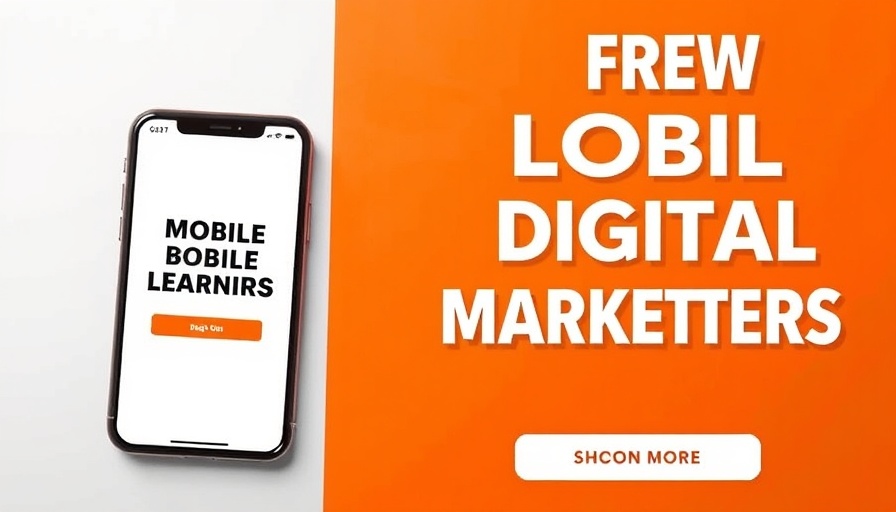
The Rise of Alison: A New Era for Digital Marketers
In the fast-paced world of digital marketing, continuous learning is essential. The landscapes of SEO, social media, and analytics are constantly evolving, and staying ahead requires flexible and adaptive learning solutions. After the quiet retirement of Google's Primer app, millions of marketers were left searching for a way to keep their skills relevant. Enter Alison, the mobile learning app that has redefined marketing education for the modern era.
Why Marketers Are Embracing Alison
Alison rises to the occasion with its robust catalog of over 5,500 free CPD-accredited courses. Whether you're a novice learning the ropes or a seasoned professional looking to deepen your expertise, Alison provides structured learning pathways that meet you at your level. With its mobile app, learning does not have to pause when you leave your desk. Instead, users can engage with bite-sized lessons at their convenience, making education more accessible than ever.
AI Learning Focus: The Future of Marketing
What sets Alison apart is its forward-thinking approach to education in artificial intelligence. Digital marketers are facing a crucial shift as AI becomes integral to the industry. Courses on topics such as "Becoming an AI-Powered Marketer" and "Prompt Engineering for AI Applications" represent Alison's commitment to preparing learners for tomorrow's marketing landscape. Noteworthy is their course on AI-Driven Digital Marketing Strategies, which has attracted over 12,800 learners, highlighting the increasing demand for AI-savvy marketers.
Unlocking Opportunities with Industry-Recognized Credentials
Alison's offerings come with the added benefit of certification. Upon completing courses, users receive CPD-accredited credentials that enhance their resumes. This is particularly valuable for business owners and aspiring marketers who want to stand out in a competitive job market. Shareable on LinkedIn, these qualifications can expand professional networks and open doors to new opportunities.
A Social Impact Mission: Education for All
Not only does Alison cater to learners, but it also champions a mission of accessibility. As a for-profit social enterprise, it aims to provide free education to individuals in 193 countries. Inspired by the UN Declaration of Human Rights, Alison's commitment goes beyond mere profit; it seeks to empower underprivileged communities by removing barriers to education.
The Global Impact of Alison: Accessibility and Community
With over 45 million learners benefiting from its resources worldwide, Alison has established itself as a pivotal player in digital education. The app's language support ensures inclusivity, offering courses in English, Spanish, French, Italian, and Brazilian Portuguese. This focus on global accessibility not only enhances individual learning experiences but fosters a worldwide community of engaged learners.
Enhancing Your Business Growth Strategy with Alison
For business owners looking to scale, integrating Alison into your growth strategy could be transformative. With courses tailored to marketing, IT, business, and personal development, you can build a more competent team and equip yourself with essential skills in a rapidly changing environment. Consider how you can leverage Alison's offerings to better engage your audience, enhance your digital marketing campaigns, and ultimately drive growth.
Your Path Forward: Take Action Today
As the digital landscape continues to evolve, taking the initiative to upskill is paramount. By embracing the learning opportunities available through Alison, you're not only investing in your personal growth but also positioning your business for success in the competitive market. Explore the Alison app today and see how it can enrich your marketing toolkit. After all, in an age where knowledge is power, staying informed is your best strategy.
 Add Row
Add Row  Add
Add 




Write A Comment